If your summer pots are looking tired, don’t toss them out just yet.
Fall’s a great time to give those containers a second life. With the right plants and a little bit of care, you can grow something that not only looks good but also puts fresh food on your table.
Whether you’ve got a porch, balcony, or just a sunny spot, making a fall container garden is easier than you might think – and way more useful than just sticking in a bunch of mums.
Why Create a Fall Container Garden?
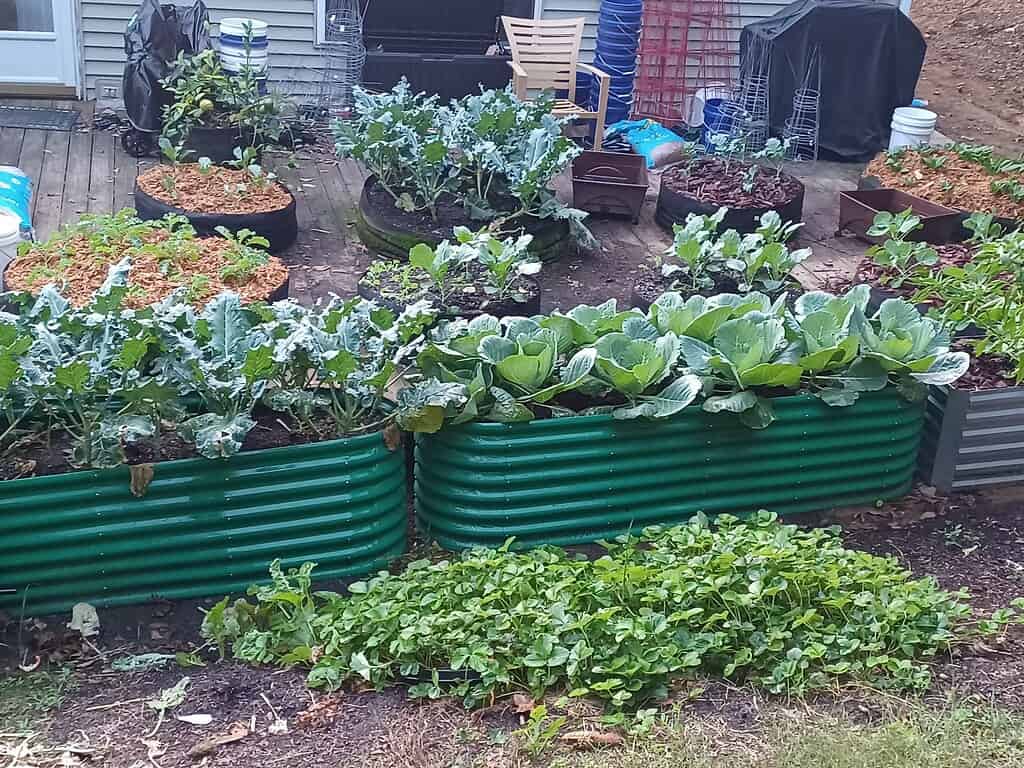
When summer plants start fading, your garden doesn’t have to call it quits. A fall container garden gives you a chance to grow fresh greens and herbs right when things are cooling down.
It’s a smart way to keep your space looking alive and useful at the same time.
You don’t need a yard either – just a few pots and a sunny spot will do. (If you’re new to growing in pots, check out my beginner’s guide to container gardening for the basics.)
Fall crops tend to grow fast and handle cooler temps better than most summer plants, which makes them ideal for container growing.
Plus, if you choose the right plants, you can turn your garden into something that’s both nice to look at and good to eat.
It’s also a great time to use up what you’ve already got.
If your summer containers still have healthy perennials or grasses, you can leave those in place and just replace what’s not going to survive the cooler weather.
This way, you’re not starting over – you’re building on what’s already there.
What You Need to Get Started
A fall container garden doesn’t require much. With just a few essentials, you’ll be ready to plant and enjoy fresh color (and maybe even food) this season.
- Containers with drainage holes – Any pot will do, as long as water can drain out the bottom. That keeps roots from sitting in soggy soil.
- Good-quality potting mix – Go for organic if you can. If you're reusing old soil, mix in some compost to bring it back to life. (Here are some effective organic gardening tips if you want to keep your containers as natural and healthy as possible.)
- Hand tools – A narrow trowel or something similar makes it easier to tuck plants in without disturbing the others.
- Watering can or hose – You’ll need to keep the soil moist, especially when plants are settling in.
- Plant tags (optional) – These are helpful if you want others to know what’s edible in your container.
- Extras for fall vibes – If you want to dress it up a little, small pumpkins, twigs, moss, or even a few decorative gourds can add a seasonal touch.
That’s really it.
Most of this stuff you can find at a local nursery, or maybe you already have it lying around.
How to Create the Best Fall Container Garden
A fall container garden is a simple way to bring color, freshness, and even food to your porch or patio. With the right mix of plants, you can enjoy both beauty and harvest through the season.
Here’s how to get started.
1. Choose the Right Location
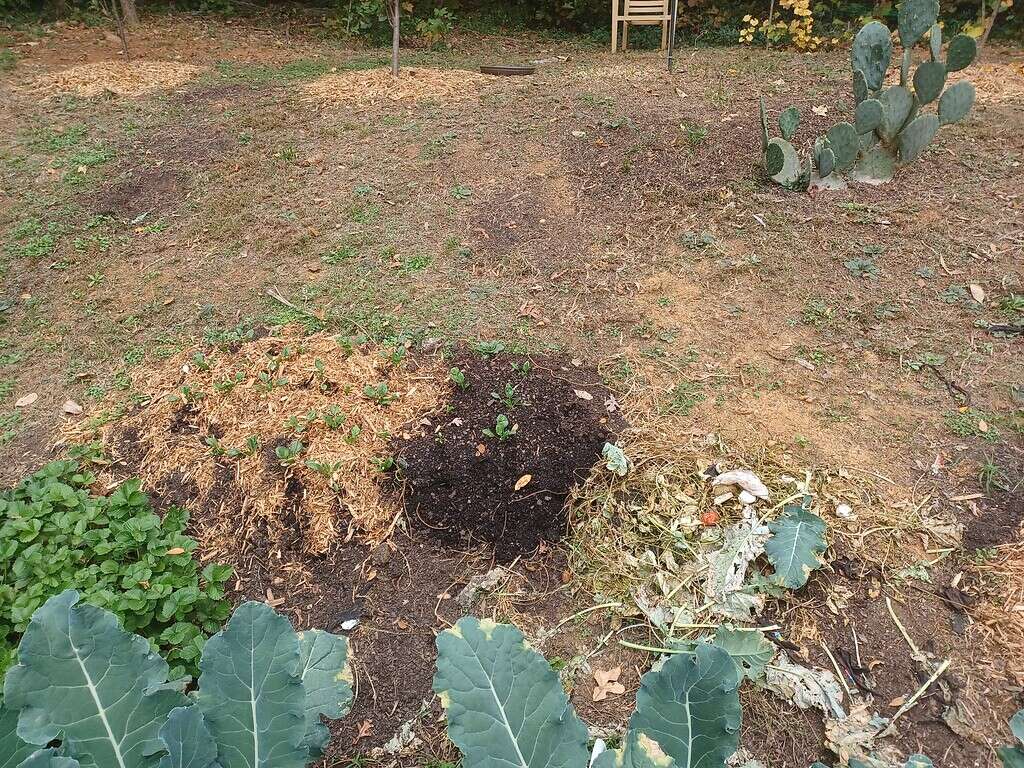
Before you start planting, take a look around and figure out the best spot for your container. Fall crops still need sunlight – about 4 to 6 hours a day is usually enough for things like greens and herbs.
If you’ve got a porch, balcony, driveway corner, or even a sunny step, that can work just fine.
Need inspiration for small spaces? Check out these creative balcony garden ideas!
The goal is to keep it somewhere you’ll actually see and use – close to the kitchen is ideal if you’re growing things you’ll want to pick often.
Early in the season, fall days can still get pretty warm. If your spot gets blazing afternoon sun, try to give your container some light shade until the temperatures settle down.
That little bit of protection helps young plants adjust without getting stressed out.
Also, think about convenience. You’ll want to check the soil often and harvest regularly, so it helps if your planter isn’t stuck in some out-of-the-way corner.
2. Prepare Your Container
Getting your container ready is just as important as picking the right plants. If you’re reusing an old pot from summer, start by clearing out anything that’s dying or won’t handle cooler weather.
But if you’ve got perennials or grasses that still look good, you don’t need to toss them – just work around them, especially those gorgeous long-blooming perennial that keep their color late into the season.
Next, check the drainage holes. If they’re clogged, clear them out so water doesn’t pool at the bottom. Plants don’t like “wet feet,” especially in cooler months.
Now it’s time for the soil. If the old soil’s looking tired, scoop out the top few inches, mix in compost or fresh organic potting mix, and loosen things up.
You want a soil that drains well but still holds some moisture.
Make sure the surface is flat and you’ve got enough room to tuck in your new plants without crowding anything you’re keeping. That way, everything gets off to a healthy start.
3. Select Plants for a Fall Container Garden
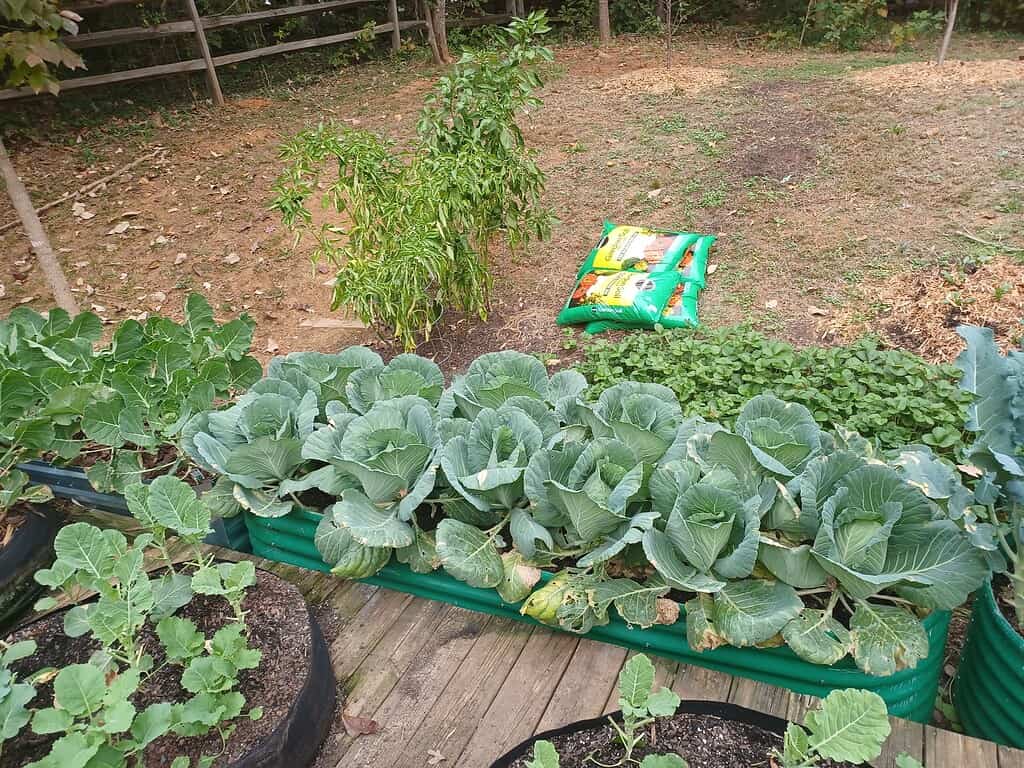
Choosing the right plants is what makes your fall container both useful and good-looking. You’ll want a mix that brings in color, texture, and most importantly – food you can actually eat.
Focus on 100% Edible Planters
If you're going to put in the effort, it makes sense to grow something you can eat. Fall is the perfect time to swap out those worn-out summer flowers with fresh herbs, greens, and a few edible flowers.
If you’d like to start small, you can always create a simple herb garden right in your containers.
These plants not only look nice but also give you something to harvest for your meals.
Skip the ornamental stuff unless you're sure it’s edible. A lot of decorative plants like ornamental cabbage or pepper might look great, but they’re not meant to be eaten.
Mix of Edibles to Include
A good planter has variety – something tall, something trailing, something colorful, and something with texture. Here's a solid mix:
- Tall & upright:
- Arp rosemary – sturdy and fragrant, perfect for the back or middle of your planter
- Dill – grows quickly and adds a light, airy look
- Colorful & seasonal:
- Swiss chard – especially ones with orange or yellow stems to match fall tones
- Gomphrena (globe amaranth) – edible flowers that hold up well in cooler weather
- Edging & texture:
- Chives – soft and grassy, also help keep pests away
- Trailing rosemary – spills over the edge nicely
- Curly parsley – adds fullness and looks better than flat-leaf in mixed planters. See our guide on how to plant parsley to grow it successfully.
- Pest-repelling options:
- Marigolds and chives both give off scents that can help protect leafy greens
This mix gives your planter layers – tall in the back, low and full in the front, and some that hang over the edges.
Know What’s Not Edible
It’s easy to get caught up in pretty plants that show up in fall displays. But not everything sold for fall is safe to eat.
Ornamental peppers and cabbages are two common ones that are labeled “ornamental” for a reason – they’re not grown to be eaten.
If you’re doing a fully edible container, skip these or clearly mark them so no one gets confused.
4. Arrange Your Container for Fall Garden
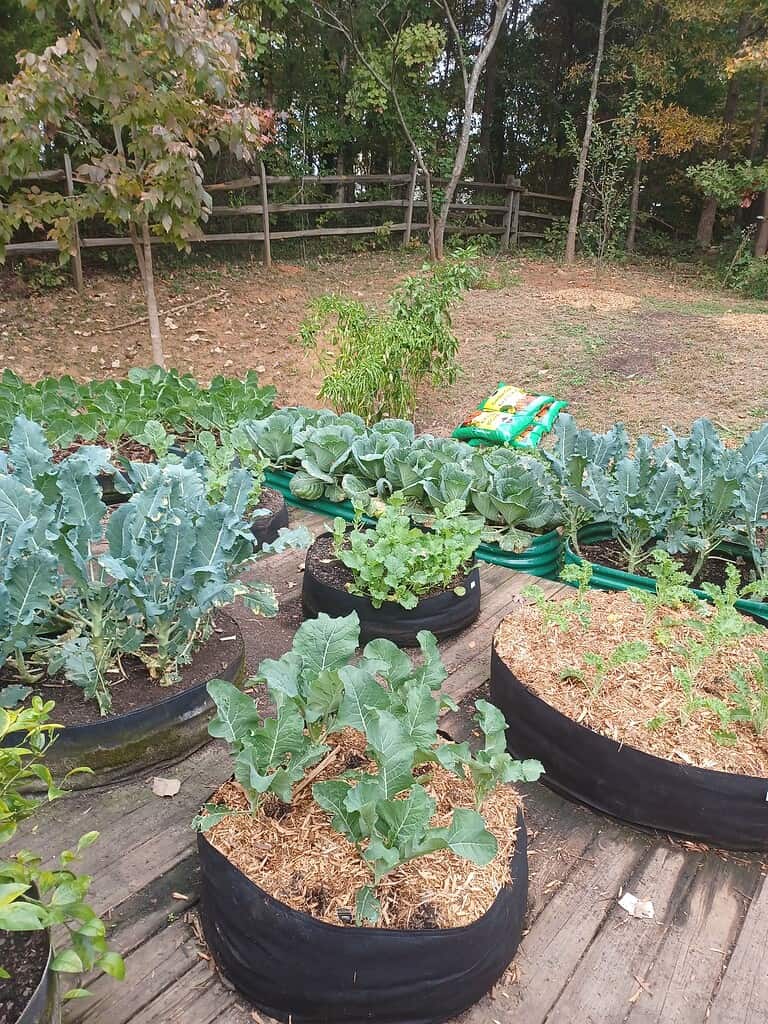
Once you’ve got your plants picked out, it’s time to get them in the soil. The way you arrange them matters – not just for looks, but also for how well they grow.
Start with Height and Flow
- Taller plants like dill or upright rosemary should go in the back (or center if the container will be viewed from all sides).
- Shorter plants like parsley and Swiss chard go in the front or middle.
- Trailing plants like rosemary or chives do best right near the edges, where they can spill over naturally.
This setup gives the container a full, layered look and makes sure every plant gets enough light and room.
Pack Them In
Don’t worry about giving each plant lots of space. Since this is a one-season garden, it’s okay to plant them closer together than usual.
Tighter spacing means your container looks full right away, and you’ll get more out of a small space.
Planting Tips
- Use a narrow trowel or dibber to dig holes between existing plants or roots.
- Gently loosen the root ball on each plant before placing it in the soil.
- Bury deep enough so the base of the plant (the neck) is level with the surface of the soil.
- Once everything’s in, press the soil down lightly to remove air pockets and give the roots good contact.
If you’re mixing in a few leftover summer plants or perennials, just work around them carefully – no need to yank everything out.
Pretty purple perennials like lavender or salvia add color and charm to your container garden.
5. Keeping Your Container Fall Garden Healthy
Once your plants are in, keeping them healthy mostly comes down to watering and a bit of light upkeep.
Fall plants are usually low-maintenance, but they still need some regular attention – especially cold-hardy vegetables to plant in fall, since they’ll keep producing well into the cooler months.
Watering Basics
Right after planting, give your container a good, deep soak. This helps settle the soil and gets the roots off to a strong start.
After that, check the soil by sticking your finger about two inches down. If it feels dry at that depth, it’s time to water.
Fall weather can be unpredictable – some days might be cool and damp, while others are warm and dry – so check often and adjust as needed.
If you're still getting hot afternoons, move your container into partial shade for a week or so. This gives new plants time to adjust without getting stressed out by the heat.
Keep Harvesting
For edible containers, regular harvesting is just as important as watering. Picking greens and herbs often helps them stay productive.
Don’t wait too long – the more you harvest, the more they grow back.
Other Light Maintenance
- Remove dead leaves or faded flowers to keep things tidy and healthy
- Watch for pests, especially on tender greens. If you see any trouble, you can often pinch off the problem areas or spray with water. For bigger issues, here are some simple pest control solutions you can try,
- Trim back anything getting too leggy or crowded to give nearby plants more light and airflow
A little upkeep here and there keeps everything looking good and growing well right through the season.
6. Making It Inviting and Festive
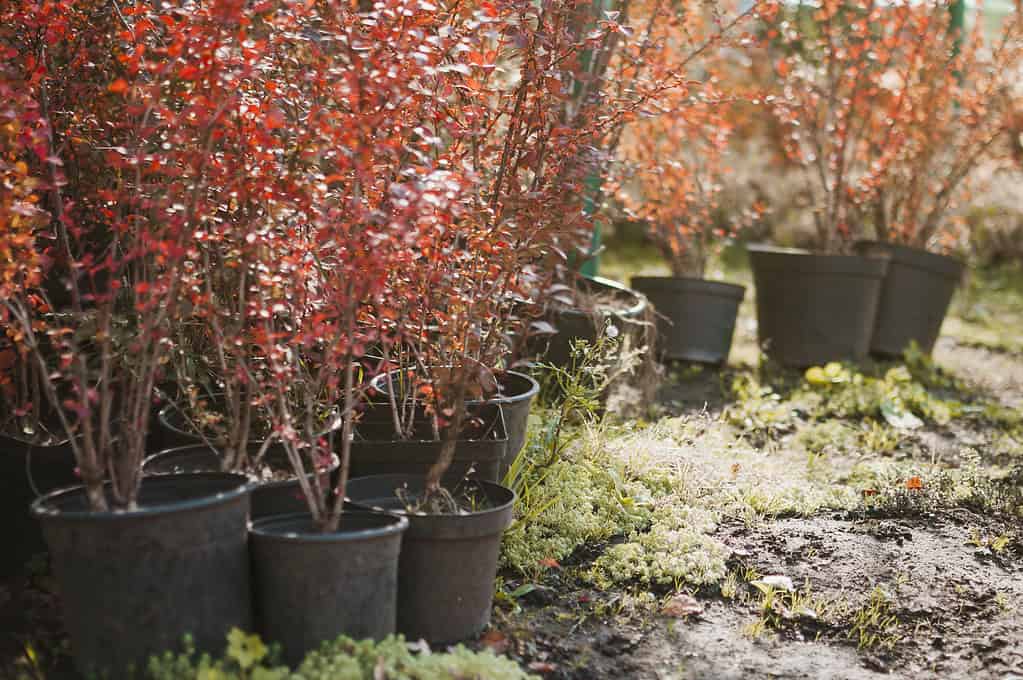
A fall container garden can be more than just a food source – it can also bring a warm, seasonal look to your porch, patio, or entryway.
With a few small touches, you can turn it into something that people want to stop and look at – or even snack from.
Add Plant Tags
If your container is full of edibles, let people know.
Simple plant tags or labels help guests and neighbors understand that what they’re seeing isn’t just pretty – it’s also meant to be picked and eaten.
This is especially helpful if you’re growing something people might not recognize right away, like gomphrena or curly parsley.
You can even make it fun by adding signs like “Pick me!” or “Yes, you can eat this.”
Encourage Interaction
Certain plants, like colorful Swiss chard, naturally invite curiosity.
If your container is near your front door or walkway, don’t be surprised if someone asks, “Can I try that?” Make it easy for them to grab a leaf or a sprig.
That’s part of the charm.
Decorate with Fall Accents
You don’t need to stop at plants. A few natural extras can bring out that cozy fall feeling without much effort. Try adding:
- Mini pumpkins or gourds
- Twigs, branches, or log rounds
- Dried moss or seed pods
- Small lanterns or rustic containers
These touches blend well with the edible plants and give your container a more finished, seasonal look.
Use Grasses for Movement and Texture
If you didn’t already include them, ornamental grasses can add a lot without taking up much space. They sway in the wind, bring in fall colors like red and gold, and fill gaps in your planter.
Consider adding edible ground covers to complete the look.
Just make sure the type you use isn’t toxic if you’re keeping everything edible – or clearly separate them from your food plants.
A little planning and creativity can make your container garden both useful and welcoming – something that fits right in with the season and invites people to slow down and enjoy it.
Start Growing a Fall Container Garden That Works for You
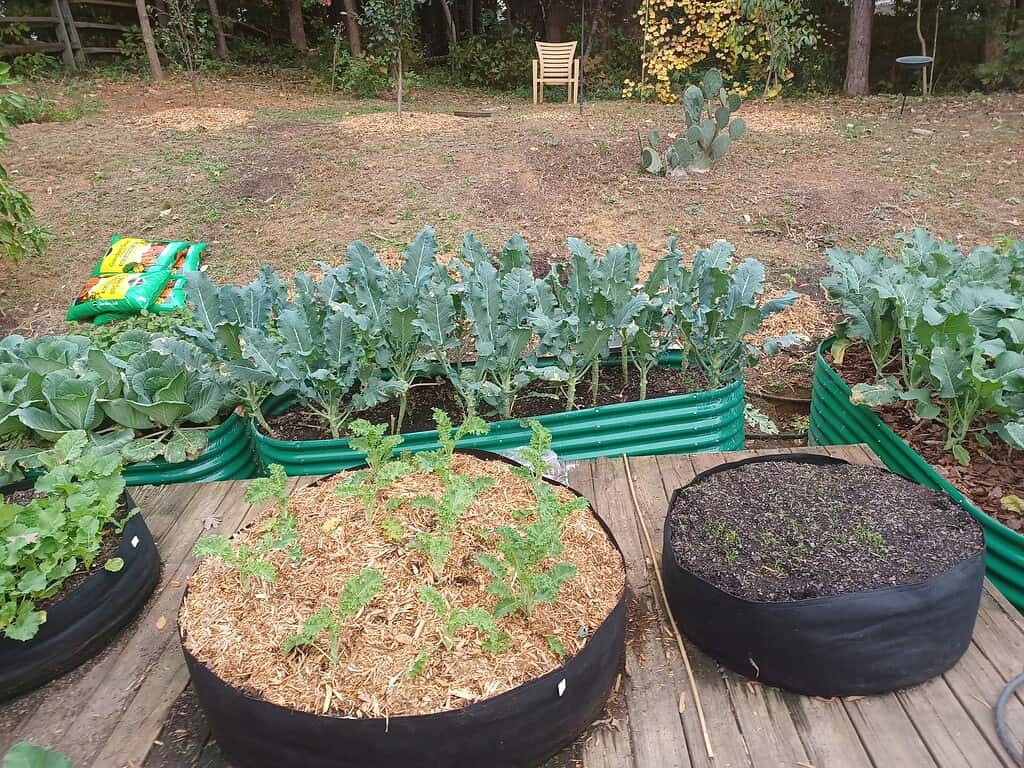
You don’t need a big yard, fancy tools (just the must-have gardening tools), or a ton of time to grow something useful and good-looking this fall.
With the right mix of edible plants, tight spacing, and just a bit of care, your container can keep producing right through the season.
Plus, it’s a great way to refresh your outdoor space when summer flowers start fading.
Start with what you have, make a plan that fits your space, and don’t overthink it – even a single pot can give you fresh herbs and greens for weeks.
Have questions or your own fall container tips? Comment down below – let’s swap ideas.
FAQs
1. Can I reuse my summer container for fall?
Yes. Remove any tired or dying summer plants, keep the ones that can handle cooler weather, and refresh the soil with compost or organic potting mix.
2. What plants are best for an edible fall container?
Swiss chard, rosemary, parsley, dill, chives, marigolds, and gomphrena are all great picks. They offer color, flavor, and texture, and many can handle light frost.
3. How close can I plant everything?
Pretty close. Since this is a short-season project, it’s fine to pack plants in tighter than usual. Just be sure they still get enough light and airflow.
4. How often should I water my fall planter?
Water deeply when the top 2 inches of soil feel dry. As the weather cools, you’ll likely water less often, but it depends on your local climate.
5. What should I avoid putting in my edible container?
Avoid ornamental-only plants like decorative cabbage or ornamental peppers unless clearly marked. They’re not meant to be eaten and can confuse guests or kids.
Ready To Transform Your Garden?
Are you looking for the best way to layout your garden beds? Maybe you're feeling a bit stuck on how to make the most of your space?
We’ve got you covered! Check out our 101+ Garden Bed Layout Ideas for your next raised bed project. This guide is filled with creative and practical ideas that can help you design a garden that fits your style, whether you’re just starting out or have been gardening for years.
Get your copy today and get inspired to bring your gardening dreams to life.

